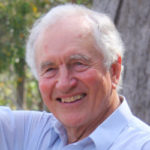Ethiopian, Eritrean atrocities in Tigray: who cares, it’s an African war
Oct 13, 2022
Fighting and famine in Tigray is described by the London Observer as ‘the most lethal anywhere in the world.’
The UN identifies 13 million people in Tigray ‘in desperate need of food assistance.’ Canadian university researchers estimate that since November 2020, in fighting between Ethiopian, Eritrean and Tigrayan forces, hundreds of thousands have lost their lives. Head of the World Health Organisation Dr. Tedros Ghebreyesus, says racism explains disinterest in an African war.
In a large and complex picture, the jig saw pieces are not easy to assemble. Ethiopia hosts one of the largest refugee populations in Africa, mostly Eritreans who have escaped south and tried to find refuge in Tigray, but there is no refuge. In antagonism toward a radical, liberty seeking Tigrayan government, Ethiopian, Eritrean and Somali forces, reinforced by ethnic group militia have closed the borders to Tigray, and blocked possible humanitarian from neighbouring Sudan.
Deprived of basic services, banking, electricity, food, medicine and communications, Tigray’s seven million people must survive against forces representing 117 million Ethiopians. Into this mix are the confusing and hostile contributions of the 2019 Nobel Peace Prize recipient, Ethiopian leader Abiy Ahmed. Having received his Prize for ending hostility with Eritrea, he now allies with that country’s leader.
In a picture depicting power hungry authoritarianism, the pieces come together, but of the Eritrean contribution, there should be no surprise.
Human Rights Watch describes Eritrea as one of the world’s most repressive countries. Since gaining independence in 1993, elections have never been held. The Eritrean government subjects citizens to widespread forced labor and conscription, imposes restrictions on freedom of expression, opinion and faith and prevents scrutiny by international monitors. Tens of thousands of refugees in Tigray are Eritreans who have fled repression in their own country.
At this point, the jig saw piece illustrating an obsession with abusive power should be obvious.
The 2021 Human Rights Watch Report concludes that President Isaias Afwerki of Eritrea is a one-man dictatorship. There is no legislature, no independent civil society organisations and no media outlets. In common with the brutal Lukashenko in Belarus, Afwerki is determined to crush his critics, hence his pursuit of Eritreans who have fled into Tigray.
Protagonists in conflicts usually made an implicit or explicit plea, ‘Please take us seriously.’ So too the Tigray People’s Liberation Front (TPLF) who ask to be referred to as the elected government of Tigray and not an alleged terrorist organisation TPLF. Their representatives resent peace making offers from the African Union if the latter do not treat them as a legitimate government.
Tigrayan forces have invaded areas beyond their borders but insist they’ve done so to break the famine induced by siege and in response to Ethiopian Abiy Ahmed’s goal, ‘We will do all we can to shame and destroy this force.’ Simultaneously, and in a move recently imitated by Russia’s Vladimir Putin, Eritrean dictator Afwerki calls up reservists and against Tigrayans, deploys an entire army.
With communication to and within Tigray severed, calculation of atrocities can’t get beyond speculation, though the UN suspects that war crimes and crimes against humanity have been committed by all sides, in particular by Ethiopian government forces in the Tigray region.
Displaced, hungry people, refugees, powerless women and children complete this picture of a brutal war, largely invisible, easily ignored.
In helping to settle almost any dispute, an elusive phenomenon called the international community, can play constructive roles, though Australia’s Department of Foreign Affairs and Trade (DFAT) seems preoccupied only with the welfare of Australian citizens. It has warned Australians in Ethiopia to contact the Embassy if they want to be evacuated, and warns against travelling to Tigray.
That warning is easily made but a touch of imagination could go beyond that, by conjuring strategies to achieve ceasefires and peace. Under the leadership of Dr. John Burton, previous head of DFAT (then called External Affairs) and as a means of ending this war, he would have focused on ways to meet the basic needs of all Tigrayans, Eritreans and Ethiopians.
John Burton would not have ignored this war. He would not have been indifferent. No element of racism would have affected his attitudes to the conflict, even if it occurred in Africa.




